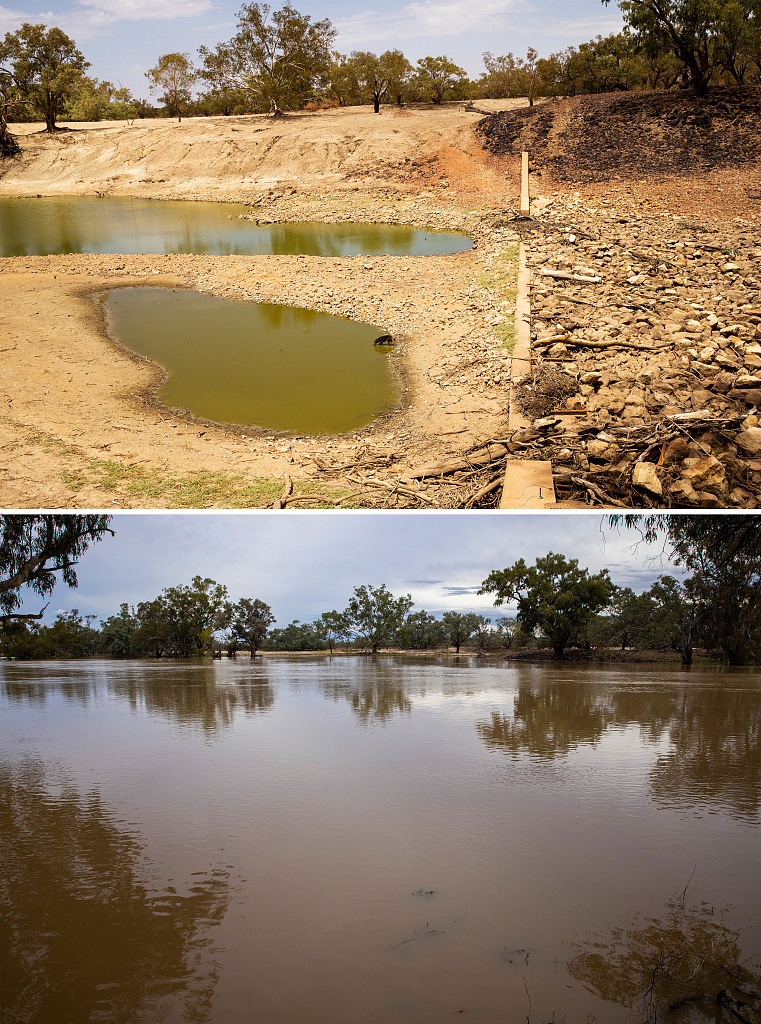Climate change is driving an increase in the severity and frequency of La Nina and El Nino events, research has found.
In an international study, which was published in the journal Nature Reviews Earth and Environment on Thursday, a team of researchers from several countries, including China and Australia, found evidence that the El Nino-Southern Oscillation (ENSO), a major climate driver, has become more intense as a result of increasing greenhouse gas emissions.
ENSO is one of the most globally significant climate phenomena, with a major influence on temperatures and rainfall worldwide.
Recent El Nino events have been linked to devastating droughts and bushfires in Australia while three consecutive La Nina years between 2020 and 2022 brought record-breaking rain and flooding across the country.

(Top) A general view of Dunlop Station's weir in Louth, Australia, January 14, 2019. (Bottom) A general view of Dunlop Station's weir in Louth, Australia, May 10, 2021. /CFP
(Top) A general view of Dunlop Station's weir in Louth, Australia, January 14, 2019. (Bottom) A general view of Dunlop Station's weir in Louth, Australia, May 10, 2021. /CFP
The study compared ENSO events in the 60 years pre- and post-1960.
They found that the number of strong El Nino events doubled from two in the pre-1960 to four in the post-1960, while the number of strong La Nina increased from one to nine.
"The current paper provides modeling evidence that climate change has already made El Nino and La Nina more frequent and more extreme," lead researcher Cai Wenju was quoted by the Australian Broadcasting Corporation (ABC) on Friday.
"The result suggests that the extreme floods and droughts we have seen in Australia are at least in part attributable to climate change through the increasing El Nino-La Nina."
During La Nina events, sea surface temperatures in the equatorial Pacific are lower than the long-term average, causing cooler global temperatures and vice-versa for El Nino.
(If you want to contribute and have specific expertise, please contact us at nature@cgtn.com.)
Source(s): Xinhua News Agency